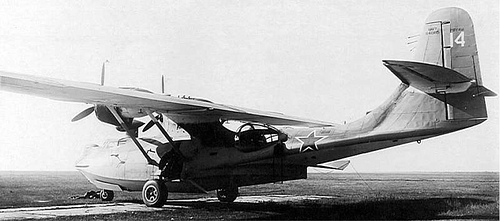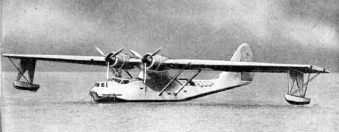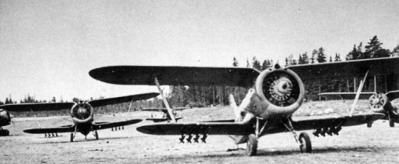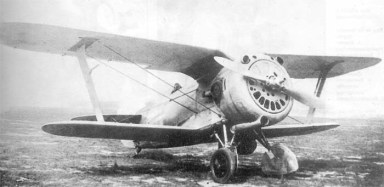While Soviet pilots typically preferred US-built fighters such as the P-39 Airacobra over the British Hawker Hurricane, the latter was the first Western Allied aircraft to arrive in the Soviet Union and thus played a vital role at a crucial stage in the war on the Eastern Front. Indeed, with the first examples arriving in September 1941, the Hurricanes had an almost immediate impact on the war in the Arctic, where they flew air defense missions around the key warm water port of Murmansk. Throughout the winter of 1941- 1942, the Soviet Hurricanes suffered heavy losses against the highly-trained Luftwaffe pilots, but a significant number of Soviet pilots would earn their proverbial stripes in the unpopular British fighter before transitioning to P-39s, P-40s, and more advanced Soviet-built fighters. From Murmansk in the far North to Stalingrad in the South, the Soviet Hurricanes were used against the invading German military in a variety of roles, from air defense interceptor to ground attack aircraft and spotter. As Lend-Lease deliveries continued and the Soviet aviation industry began to recover from its monumental evacuation eastward, the Hurricanes were slowly relegated to secondary duties. By the time deliveries of the British fighter ceased in 1944, nearly 3,000 examples had been sent to the Soviet Union. Not the most popular fighter in the Soviet Union, the Hawker Hurricane played a key role in the first year of the war, and while Soviet war histories typically portray the fighter in a negative light, the aircraft undoubtedly contributed to the ultimate victory on the Eastern Front.
Soviet specialists were able to become acquainted with the Hawker Hurricane for the first time in March 1941, when a Soviet delegation that was visiting Germany was allowed to examine several captured aircraft, including a Hurricane and a Supermarine Spitfire. The delegation noted that the former was obsolete when compared to the sleek Spitfire. However, when Germany invaded the Soviet Union several months later, Moscow found itself in a dire situation and the Western Allies extended the offer of aid to their new, unlikely ally. The Kremlin immediately requested that 3,000 fighter aircraft be delivered to the Soviet Union, and in July, British Prime Minister Winston Churchill agreed to send 200 Kittyhawks and 200 Hurricanes. The UK-built fighters would be the first to arrive when, in early September, an initial batch of 39 Hurricane Mk. IIBs and 550 British servicemen were deployed to the Soviet Union’s Arctic port of Murmansk.
The deployment, known as Force Benedict, departed the UK in mid August, and arrived in Murmansk in early September. 24 of the 39 fighters were transported on the carrier HMS Argus, and 15 were crated and transported aboard British merchant vessels. The RAF contingent was comprised of two squadrons: No. 81 Squadron RAF and No. 134 Squadron RAF, both of which fell under No. 151 Wing RAF. Tasked primarily with training Soviet pilots to fly the Hurricane, the RAF contingent found ample opportunity to carry out operational sorties against the Luftwaffe, both by conducting air patrols over the Murmansk area and by flying bomber escort missions in support of Soviet bombers. The RAF pilots made their mark as early as September 12th, when five Hurricanes of No. 81 Squadron intercepted a Henschel reconnaissance aircraft and five Messerschmitt Bf-109 escorts, shooting down three of the fighters. One Hurricane was lost and one RAF pilot was killed in the battle. By the time 151 Wing returned to the UK in December, the RAF pilots had shot down 16 German aircraft for the loss of only one Hurricane. However, 151 Wing’s primary objective was to train Soviet pilots to fly the bulky fighter. The RAF pilots gradually relinquished their patrol duties as their Soviet counterparts became accustomed to the foreign fighter, and by November, 151 Wing had ceased combat operations around Murmansk altogether. By this time, three Soviet squadrons had successfully converted to the Hurricane, and their pilots were competent enough in the British fighter to train other airmen. Their mission complete, the RAF contingent departed Murmansk on November 27th, and by the end of the year, the number of Hurricanes in the Soviet Union would reach 100.
The Operational History of the Soviet Union’s Hawker Hurricanes
The first shipment of Hawker Hurricanes was handed over to the Soviet Northern Fleet’s newly-created 78th IAP, which had drawn pilots from the mixed 72nd SAP that had been fighting against the Luftwaffe since June, though with little success. The 78th IAP, based at Vaenga-1, was commanded by Boris Safonov, a Soviet ace who had by this time been credited with shooting down 14 German aircraft. The arrival of Force Benedict in August 1941 effectively doubled the Northern Fleet’s number of fighter aircraft, which had been flying I-16s, I-15s, and I-153s during the first few months of the war. The Hurricanes greatly aided the air defense of Murmansk and the Murmansk-Moscow Railway, a vital supply line needed by the Allies to send aid to the Soviet Union. Indeed, Murmansk, as the Soviet Union’s only warm water Arctic port, was one of two major destinations for the Allied Arctic convoys that set sail from the UK, Iceland, and North America (the other destination was Arkhangelsk). It was in the Arctic that the Hurricane arguably had its greatest impact on the Eastern Front. Many pilots of the Northern Fleet VVS gained fame while flying Hurricanes, including Pyotr Sgibnev, who was credited with shooting down 15 enemy aircraft while flying the British fighter, and Boris Safonov, who scored several of his 20 individual victories in a Hurricane.
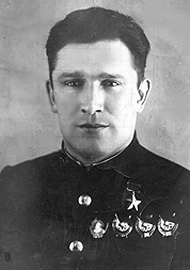
Twice Hero of the Soviet Union Boris Safonov
The first Soviet victory in a Hawker Hurricane was recorded in early October, when Lieutenant D. Sinev shot down a Messerschmitt Bf-110. By the end of the month, the 78th IAP’s pilots claimed a further eight German aircraft shot down. However, shortly thereafter, both sides curtailed air activity for the winter months. During the winter, the Murmansk area is plunged into a period of almost perpetual darkness, save for a few hours of semi-twilight around noon each day, making flying conditions far from ideal. Nevertheless, German air attacks did not cease entirely, as the Luftwaffe would use any and all available sunlight to attack the Murmansk-Moscow Railway, though such attacks were typically focused further south on the railway. In early 1942, the Luftwaffe resumed its bombing campaigns in full, focusing on the port of Murmansk as well as the Murmansk-Moscow Railway. The 78th IAP, as well as the 2nd GvIAP, became engaged primarily with the defense of these key supply lines. Both regiments also escorted Soviet ground attack aircraft and bombers behind enemy lines during strikes against German-held positions, shipping, and airfields. In March, the 27th IAP joined the list of Northern Fleet regiments that were equipped with Hurricanes, followed by the 20th IAP in the summer. Though confronting a formidable foe in the Luftwaffe’s Jagdgeschwader 5 (JG 5), the Northern Fleet’s Hurricanes were used effectively in the air defense capacity around Murmansk. On April 15, for example, ten Hurricanes and three MiG-3s of the 2nd GvIAP were scrambled to intercept a large group of Ju-87 dive-bombers that was accompanied by both Bf-110s and Bf-109s. Major Boris Safonov, who had been put in command of the 2nd GvIAP, led the 13 Soviet fighters in their attack against the German aircraft. Diving from a higher altitude with the sun at their backs, the Hurricanes and MiGs caught the Ju-87s by surprise and managed to shoot down eight of the dive bombers. In the ensuing melee, a further five of the German escorts were claimed as destroyed. In the late spring, the Northern Fleet VVS began to gradually convert to P-39s and P-40s, with the 2nd GvIAP requipping entirely with the US-built fighters that summer. Nevertheless, a small number of Hurricanes continued to be flown by the 27th IAP and 78th IAP, increasingly in the ground attack role.
One Baltic Fleet regiment, the 3rd GvIAP, also flew Hawker Hurricanes for a short time in late 1942. Tasked primarily with escorting Il-2 Sturmoviks, the regiment fought both against the Luftwaffe and the Finnish Air Force, achieving success against both adversaries. During one especially effective mission on August 30, 17 of the regiment’s Hurricanes along with seven P-40s escorted a ground attack force of eight Ilyushin Il-2s against the Gorodets airfield, where a number of Junkers Ju-88 bombers were based. While the Il-2s were approaching Gorodets, a group of Hurricanes split off from the main contingent and flew to Siverskaya, an airfield that was home to a group of Bf-109s. Effectively blocking the German fighters from taking off, the Hurricanes at Siverskaya enabled the Il-2s to make multiple passes against the Ju-88s on the ground at Gorodets without interference from enemy fighters. Based on photos taken by several Hurricanes, 17 Ju-88s were destroyed during the raid, along with two Bf-109s. In all, from August to October, the 3rd GvIAP’s pilots claimed 68 enemy aircraft shot down for the loss of 14 Hurricanes and 11 pilots. In October, the 3rd GvIAP transitioned to the Soviet-built LaGG-3 fighter.
Though the Hurricanes’ service with the Soviet Navy has received a certain degree of publicity in post-war accounts, the fighter was also used elsewhere in the Soviet Union. Most VVS Hurricanes were flown on the Karelian Front, where a total of nine regiments were equipped with the British-built fighter. Across the Front, the Hurricane regiments were responsible, first and foremost, for defending the railways that connected the port cities of Murmansk and Arkhangelsk to the Soviet interior. The most notable Hurricane-equipped regiment, the 152nd IAP, used the fighter in a similar capacity as their compatriots of the Soviet Northern Fleet, flying air defense missions around the southern sector of the Karelian Front, specifically around Medvezhegorsk, Mosalsk and Rebolsk, and also serving as bomber escorts behind enemy lines. In this sector, the VVS’ primary adversary was the Finnish Air Force, which was equipped with obsolete Fokker D.XXIs and Brewster Buffalos. The 152nd was the most successful of the Karelian Front’s Hurricane regiments, and one pilot, Pavel Ivanovich Gavrilov, achieved ace status by shooting down five enemy aircraft while flying a Mk. IIB. Hurricanes across the Karelian Front were involved in fierce clashes against the Luftwaffe and Finnish Air Force in the first half of 1942, but in May, regiments on the Front began receiving P-39s and P-40s, and the Hurricanes were slowly replaced.
The Hurricane was also flown by VVS units further south, and their presence was almost ubiquitous on the Eastern Front throughout 1942, though on a relatively small scale. In the winter of 1941-1942, the 4th IAP, which had been fighting on the Southern Front prior to this point, transferred to Yaroslavl and transitioned to the British fighters. After training in their new aircraft, the 4th IAP was responsible for air defense of Yaroslavl and Rybinsk. In May, the 4th IAP was split in two, with some of the regiment’s Hurricanes staying in Yaroslavl, and others being transferred to the Bryansk Front. The pilots on the latter front used their fighters primarily for escorting bombers and attack aircraft, and for providing air cover for Red Army ground troops. In July, the 4th IAP was transferred to Tula and Voronezh, where the regiment’s Hurricane pilots claimed 40 German aircraft shot down. In August, the regiment transitioned to Yakovlev Yak-1 and Yak-7 fighters.
A number of Hurricanes were used for air defense around Moscow, where the 67th, 429th, 438th, 488th, and 736th IAPs were equipped with the British fighter. The VVS Hurricanes in this sector were engaged both the defense of the Soviet capital and in offensive actions on the Western and Kaliningrad Fronts. In January 1942, several Hurricane-equipped regiments flew in support of the Red Army’s counter offensives outside Moscow, and a number of the Soviet capital’s Hurricanes were transferred to the South-Western Front. In early 1942, the 1st GvIAP was equipped with the British fighter, with which the regiment’s pilots managed to shoot down four German aircraft over the Kalinin in March, and another 20 in April. On the Voronezh Front, Hurricanes of the 438th IAP were tasked primarily with escorting Il-2 Sturmovik missions against the Wehrmacht.

A Hurricane on the North-West Front. Photo source: Airpages.ru
In the summer of 1942, several Hurricane-equipped regiments, most notably the 436th, were transferred to the Stalingrad area. In the first few days of July, while flying cover Red Army ground troops, pilots of the 436th claimed 29 German aircraft shot down. By the end of the month, the regiment had claimed a total of 40 enemy aircraft shot down for the loss of 17 Hurricanes. Shortly thereafter, the regiment was requipped with P-40s. Meanwhile, the 485th IAP under the command of Georgiy Vasilevich Zimin, were using their Hurricanes to cover Red Army ground troops on the North-Western Front. In addition to escorting Sturmoviks and cover ground troops, the 485th IAP’s Hurricanes themselves engaged in ground attack sorties against the Wehrmacht. In May, the regiment’s pilots claimed 56 German aircraft shot down. The 485th IAP continued flying their Hurricanes until July, when they converted to Yak-1s.
By the end of 1942, the vast majority of the VVS’ Hurricane regiments had converted to either P-39s, P-40s, or Soviet-built fighters, and the UK-built fighters were then transferred to PVO air defense units around Moscow, Murmansk, Leningrad, and Stalingrad. Nevertheless, Hurricane deliveries continued, and several frontline fighter regiments flew the aircraft until mid-1944. Beginning in late 1942, the UK started shipping Hurricane Mk. IICs, armed with four 20 mm cannon, to their Soviet allies, the majority of which were sent directly to PVO units. In April 1943, an agreement was reached that saw the delivery of 60 Hurricane Mk. IIDs, a ground attack variant that was armed with two 40 mm (1.57 in) Vickers S guns. In early 1944, the 246th IAP was equipped with the Mk. IIDs, though ultimately, the heavy ground attack variant was not used operationally on the Eastern Front.
Following their withdrawal from frontline service, the majority of war weary Hurricanes were written off, though a small number were used for other purposes. Several were equipped with vertical aerial cameras and were used as short-range reconnaissance aircraft. Such modifications, which were typically undertaken by individual units, were flown both by special reconnaissance regiments and by ordinary fighter regiments. A small number were used by spotter reconnaissance squadrons on the Leningrad, Volkhov, and Kalinin Fronts, where specially modified two-seat Hurricanes were used for artillery spotting purposes. An even smaller number were fitted with special release mechanisms and were used to tow A-7 and G-11 combat gliders (such converted Hurricanes reportedly flew several sorties). Still more retired Hurricanes were sent to fighter training units in the rear where they served as conversion trainers. Similarly, they would tow special cones that cadets (and seasoned pilots) would use for aerial target practice. Indeed, though the majority of the Soviet Union’s Hurricanes were withdrawn by 1943, the British fighter continued to be used by Soviet forces through the end of the war, in a wide variety of roles.
The Hawker Hurricane in the Eyes of Soviet Pilots
The majority of the Soviet Union’s Hurricanes were of the Mk. IIB variant, which featured two additional 7.6 mm (.30 caliber) Browning machine guns, bringing the total number to 12 (six in each wing). However, it quickly became clear that the small-caliber guns inflicted little damage against the sturdy German aircraft. One Soviet pilot, Evgeniy Pavlovich Pesterov, recalled, “this fighter [Hurricane] was very unimportant. Its armament was weak- 12 small-caliber machine guns. This was, for modern German fighters at the time, like peas that could not cause any damage.” Georgiy Vasilevich Zimin, who commanded the 485th IAP and would later become Marshal of Aviation, explained that, “in order to shoot down an enemy aircraft [in a Hurricane], it was necessary to approach it closely. To shoot down a heavy bomber, such as a Heinkel-111 [He-111], using conventional machine guns was extremely difficult.” Consequently, as often happened with Lend-Lease aircraft, the armament of Soviet Hurricanes was typically modified, either in the field or at modification centers. The most popular modifications entailed the removal of all Brownings and the installation of two Soviet-built 12.7 mm Berezin UB machine guns and two 20 mm ShVAK cannon. With such a set up, the altered Soviet Hurricanes could produce a weight of fire of 3.84 kg (8.45 lb) per second, which was more than any other single-engine Soviet fighter or German fighter at the time. In other cases, Soviet regiments would choose to retain four Brownings and add two UBs and two ShVAKs (or any combination of the above).

A Hurricane Mk. IIB armed with two ShVAK cannon and two UB machine guns. Photo source: Rybin, Yuriy. Soviet Hurricane Aces of World War 2.
With its sturdy construction and thick wings, the Hurricane had enormous potential as a gun platform. However, extra armament and ammunition equated to extra weight, which accentuated one of the Hurricane’s greatest deficiencies: its lack of power. Though the fighter was powered by an early model of the illustrious Rolls-Royce Merlin engine, the XX, the airframe was simply too large, heavy, and bulky to achieve the same flight characteristics as other Merlin-powered fighters. During testing conducted by the NII VVS (Air Force Research Institute), it was discovered that the Hurricane’s speed was somewhere between the I-16’s and the Yak-1’s. Moreover, it was inferior to the Bf-109E in terms of speed at low and medium altitudes and had a lower rate of climb. Nikolai Gerasimovich Golodnikov, the commander of the Soviet Northern Fleet’s 2nd GIAP, noted that the Hurricane’s heavy airframe, “did not glide well. The Rolls-Royce engine was good, but could not stand up to prolonged operation at maximum output. It broke down. Of course, it was a weak engine for this particular airframe… it had a very thick profile and poor acceleration characteristics. At maximum speed it was somewhat faster than an I-16. But until it had attained this speed, many things could happen. It was not slow in responding to the control stick, but everything happened smoothly, in its own time. In the I-16, if you moved the stick, the airplane inverted right now. With this beast, it would roll over very slowly.”
One factor that exacerbated the Hurricane’s underperformance was the Soviet Union’s use of lower octane gasoline. The Merlin XX engine was designed to use 87 octane fuel, which was not available in the Soviet Union. Indeed, the typical grade of Soviet aviation fuel was anywhere from 70 to 78 octane, and this was often times unintentionally contaminated with other chemicals, dirt and sand. Though the UK and US sent high-octane aviation fuel to the Soviet Union, the supply did not meet the demands of the VVS and VMF, and lower octane fuel was consequently often times used in Hurricanes. A British engineer by the name of Henry Broquet who was posted with 151 Wing in Murmansk collaborated with his Soviet counterparts and developed a tin alloy catalyst that enabled the Merlins to run on lower-grade fuel. Such measures helped make the Soviet fuel compatible with the Hurricane (and other Western aircraft), but the fact remained that the lower-grade fuel had a detrimental effect on the performance of the engines. The low-octane fuel both diminished overall performance and led the Merlins to wear down at a fairly rapid pace. Later in the war, delivery of aviation fuel from the Western Allies would match pace with Soviet demand for such fuel, but by this time, the Hurricanes had largely been relegated to secondary duties.
Even with higher-octane fuel, however, the Hurricane’s performance did not match that other Western fighters (or Soviet-built fighters). In his memoir, Georgiy Zimin recalled holding a series of mock dog fights in his Hurricane against a Soviet P-39 Airacobra in order to determine the combat characteristics of the British fighter. “In the first place, I was interested in the possibility of fighting vertically. I understood that in such a battle, the Hurricane was weak, but it was necessary to find out exactly how much.” Using the results from these mock dog fights, Zimin instructed his pilots to avoid engaging enemy fighters in vertical maneuvers at all cost. “The vertical maneuver for it [the Hurricane] was clearly contraindicated,” Zimin wrote.”The battle could only be conducted on turns.” He also noted that the Hurricane’s performance in a dive was much worse than the Airacobra’s. Ultimately, Zimin recommended that special actions be taken by Hurricane pilots in order to downplay the effects of the fighter’s deficiencies. For example, he suggested maintaining an altitude differential between flights or not more than 400-500 meters, “otherwise the flights would not have time to come to each other’s aid. The separation of pairs of flights should not exceed 100 meters. Direct support for bombers and ground attack aircraft was to be carried out approximately 50-100 meters… for fast fighters such as, for example, ‘Yaks’ such recommendations would simply be unacceptable, since they would limit the freedom to maneuver. But for the ‘Hurricanes’ it was necessary to tighten battle formations as much as possible.”

A Hawker Hurricane in Soviet markings at the Vadim Zadorozhny Technical Museum near Moscow. Photo taken by author.
Though Soviet war memoirs tend to portray the Hurricane in a negative light, Soviet pilots did acknowledge some of the British fighter’s merits. First and foremost, VVS and VMF airmen were pleased with the Hurricane’s ultra high frequency radio system. Soviet-built fighters in 1941-1942 typically lacked radios, rendering both offensive and defensive action almost futile (radios were generally found only in the aircraft of formation leaders). This changed as more Western aircraft began to arrive and as Soviet aviation factories began including radios in all fighters, but early in the war, when the Hurricanes were often the first line of defense against the Luftwaffe, the UHF radio systems in the British fighter improved the Soviet pilots’ tactical situation immeasurably. Soviet airmen also appreciate the comfort and flyability of the Hurricane. One pilot who flew MiG-3s and Hurricanes, Pavel Borisovich Florinskii, noted that the latter was more comfortable to fly than the former. Moreover, despite its performance drawbacks, many Soviet airmen were confident in the fighter’s ability in horizontal flight. As Nikolai Golodnikov recalled, defensive tactics were developed that accentuated these abilities. “It was very good in horizontal flight,” he noted. “If four Hurricanes established a circle, it was impossible to break out of it. No Germans could break into the circle either.”
Deliveries of the Hurricanes continued at a rapid pace through 1942 despite the fact that, by this time, Soviet VVS and VMF units had begun to receive US-built P-39 Airacobras and P-40 Warhawks, aircraft that Soviet airmen typically preferred over the British fighter. Moreover, the Soviet aviation industry had begun to recover from its monumental evacuation eastward, and more advanced Lavochkin La-5s and Yakovlev Yak-7s were beginning to arrive at front line units. Nevertheless, deliveries continued, and by 1944, when Hurricane shipments ceased, the Soviet military had accepted 2,834 examples of the British-built fighter. As mentioned above, initial batches were comprised of Mk. IIB models, which, along with their Canadian-built analogs (X, XI, and XII) would account for more than half the Hurricanes flown by Soviet forces. Approximately 200 Mk. IIAs, armed with eight Browning machine guns, were also sent by the British, and just over 1,000 Mk. IICs, with their four 20 mm Hispano cannon, were flown by Soviet forces. A small number of Mk. IIDs (two 40 mm cannon) were also sent to the USSR.
Much like in the West, where the Hurricane’s contribution to victory was unjustly overshadowed by that of the sleek Spitfire’s, its service in the Soviet Union is often overlooked. Arriving at a crucial stage in the war against Germany, the early Hurricane shipments had an immediate impact on the battlefield. Indeed, in late 1941 and early 1942, the Hurricanes helped the Soviet military hold the line against the Germans around the vital port of Murmansk, when failure to do so would have had debilitating effects on the Allied war effort.
-Patrick Kinville
Bibliography:
Chorlton, Martyn. Hawker Hurricane MK I-V. Osprey Publishing, 2013.
Ivanov, Sergei. Hawker Hurricane, Chast 2. Voina v Zozdukhe No. 74.
Kotelnikov, Vladimir. Lend-Lease and Soviet Aviation in the Second World War. Helion & Company, 2018.
Kotelnikov, V.P., Petrov, G.F., Sobolev, D.A., Yakubovich, N.V., Amerikantsii v Rossii.
Sokhorukov, Andrey. “Conversations with N.G. Golodnikov.” http://lend-lease.airforce.ru/english/articles/golodnikov/part1.htm
Rybin, Yuriy. Soviet Hurricane Aces of World War 2. Osprey Publishing, 2012.
Ya Pomnyu Project (www.iremember.ru)
Zhirikhov, Mikhail. Asi Nad Tundroi: Vozdyshnaya Voina V Zapolyare, 1941-1944. Tsentropoligraf, 2011.
Zimin, G.V. Istrebiteli. Voenizdat, 1988.
 The third Superfortress to arrive in the Soviet Union was a B-29-15-BW (serial number 42-6365), named General H.H. Arnold Special of the 468th Bomb Group/794th Bomb Squadron. On November 11th, 1944, this particular B-29 was flying as a pathfinder aircraft for a 27-ship formation that took off from Pengshan, China that was tasked with bombing an aircraft factory in Omura on Kyushu Island, Japan. On the way to the target, the formation flew through the eye of a typhoon, which caused the General H.H. Arnold Special to lose one engine, its central fire control system and its radar. When it emerged from the storm, the crew found themselves far off course to the north, and they opted to fly to the Soviet Far East. Upon crossing into Soviet airspace, the B-29 was intercepted by Soviet fighters and escorted to Tsentralnaya-Uglovaya, where the aircraft and crew were interned.
The third Superfortress to arrive in the Soviet Union was a B-29-15-BW (serial number 42-6365), named General H.H. Arnold Special of the 468th Bomb Group/794th Bomb Squadron. On November 11th, 1944, this particular B-29 was flying as a pathfinder aircraft for a 27-ship formation that took off from Pengshan, China that was tasked with bombing an aircraft factory in Omura on Kyushu Island, Japan. On the way to the target, the formation flew through the eye of a typhoon, which caused the General H.H. Arnold Special to lose one engine, its central fire control system and its radar. When it emerged from the storm, the crew found themselves far off course to the north, and they opted to fly to the Soviet Far East. Upon crossing into Soviet airspace, the B-29 was intercepted by Soviet fighters and escorted to Tsentralnaya-Uglovaya, where the aircraft and crew were interned. Ten days later, another B-29-15-BW (42-6358), named Ding Hao! of the same Bomb Group & Bomb Squadron as the General H.H. Arnold Special, was part of a 62-ship raid on the Omura aircraft factory. Over Japan, the Superfortresses encountered heavy opposition from Japanese fighter and from light bombers that dropped phosphorous explosives onto the formation. Consequently, only 27 B-29s reached the intended target and another 13 managed to bomb secondary targets. Eight of the Superfortresses failed to return from the mission, including Ding Hao!, which, during the attack, had been hit by machine gun fire from a Japanese fighter. 42-6358’s copilot, Jack Schaefer, had recently joined to rest of the crew overseas, and the raid on the Omura plant was his first combat mission. According to him, “Being hit by enemy fire was nothing new for the rest of the crew. They were on their ninth mission and this had happened before. It was new for me, but I was so busy doing my job that I didn’t realize we had been hit until the engineer shut down no. 3. He advised the pilot that no. 4 was doubtful as well. I had been on several training flights where we had lost an engine, so I was not all that concerned. The pilot conferred with the engineer and the navigator and made the decision that we would not have enough fuel to get back beyond enemy lines. After reviewing our options, we decided to head north to Vladivostok in the Soviet Union.” Upon crossing into Soviet airspace, Ding Hao! was intercepted by Yak-9s and escorted to Tsentralnaya-Uglovaya. All crew members survived.
Ten days later, another B-29-15-BW (42-6358), named Ding Hao! of the same Bomb Group & Bomb Squadron as the General H.H. Arnold Special, was part of a 62-ship raid on the Omura aircraft factory. Over Japan, the Superfortresses encountered heavy opposition from Japanese fighter and from light bombers that dropped phosphorous explosives onto the formation. Consequently, only 27 B-29s reached the intended target and another 13 managed to bomb secondary targets. Eight of the Superfortresses failed to return from the mission, including Ding Hao!, which, during the attack, had been hit by machine gun fire from a Japanese fighter. 42-6358’s copilot, Jack Schaefer, had recently joined to rest of the crew overseas, and the raid on the Omura plant was his first combat mission. According to him, “Being hit by enemy fire was nothing new for the rest of the crew. They were on their ninth mission and this had happened before. It was new for me, but I was so busy doing my job that I didn’t realize we had been hit until the engineer shut down no. 3. He advised the pilot that no. 4 was doubtful as well. I had been on several training flights where we had lost an engine, so I was not all that concerned. The pilot conferred with the engineer and the navigator and made the decision that we would not have enough fuel to get back beyond enemy lines. After reviewing our options, we decided to head north to Vladivostok in the Soviet Union.” Upon crossing into Soviet airspace, Ding Hao! was intercepted by Yak-9s and escorted to Tsentralnaya-Uglovaya. All crew members survived.



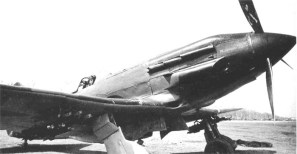
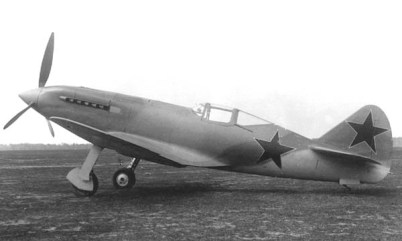






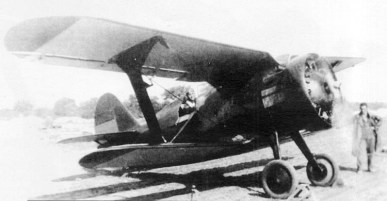
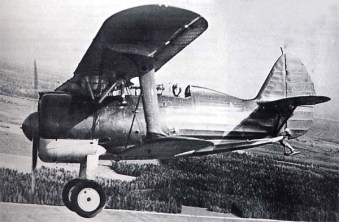
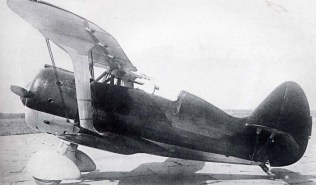
 The A-20 Havoc/Boston twin-engine multi-role aircraft had a laudable service record in World War II. From its brief service with the French Armée de l’air before the Fall of France in 1940 through the capitulation of Japan in August of 1945, the rugged and versatile A-20 played an active role in the Western Allies’ major campaigns in North Africa, the Mediterranean, Western Europe, and the Pacific. However, the Havoc’s largest contribution to victory over the Axis Powers was felt on the often-over-looked Eastern Front. Indeed, receiving just under 3,000 examples from the US as part of the Lend-Lease program, the Soviet Union operated more A-20s than any other country. At Stalingrad, the Kuban, Kurk, and during the Soviet Union’s enormous offensives in 1944 and 1945 that brought the Red Army to Berlin, A-20s were used effectively by Soviet forces as medium bombers, reconnaissance aircraft, ground attack aircraft, heavy night fighters, and high-speed transports. What is more, the Havoc was widely used as a torpedo bomber with the Soviet Navy, where it had an impressive service record against German ships and submarines. Although the aircraft’s attributes are often overlooked, the Havoc in truth was a fast, agile, and all-around high-quality aircraft that could adeptly perform whichever mission was needed. In all theaters and fronts of World War II, the A-20 proved itself to be an unsung workhorse.
The A-20 Havoc/Boston twin-engine multi-role aircraft had a laudable service record in World War II. From its brief service with the French Armée de l’air before the Fall of France in 1940 through the capitulation of Japan in August of 1945, the rugged and versatile A-20 played an active role in the Western Allies’ major campaigns in North Africa, the Mediterranean, Western Europe, and the Pacific. However, the Havoc’s largest contribution to victory over the Axis Powers was felt on the often-over-looked Eastern Front. Indeed, receiving just under 3,000 examples from the US as part of the Lend-Lease program, the Soviet Union operated more A-20s than any other country. At Stalingrad, the Kuban, Kurk, and during the Soviet Union’s enormous offensives in 1944 and 1945 that brought the Red Army to Berlin, A-20s were used effectively by Soviet forces as medium bombers, reconnaissance aircraft, ground attack aircraft, heavy night fighters, and high-speed transports. What is more, the Havoc was widely used as a torpedo bomber with the Soviet Navy, where it had an impressive service record against German ships and submarines. Although the aircraft’s attributes are often overlooked, the Havoc in truth was a fast, agile, and all-around high-quality aircraft that could adeptly perform whichever mission was needed. In all theaters and fronts of World War II, the A-20 proved itself to be an unsung workhorse.
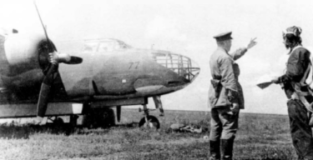


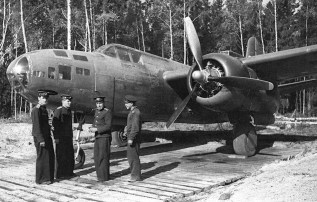
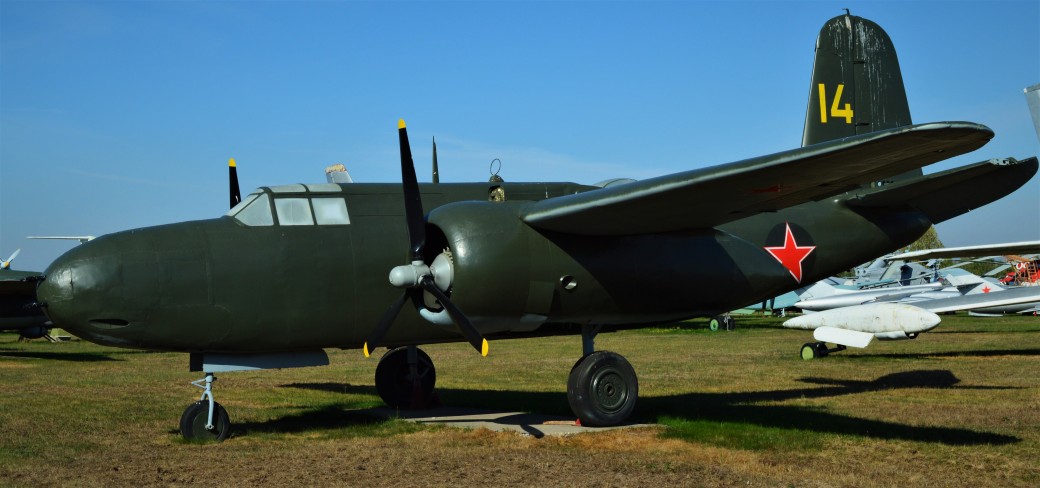


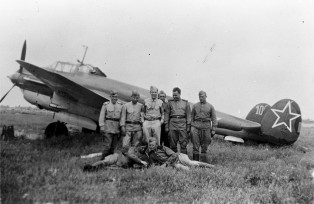
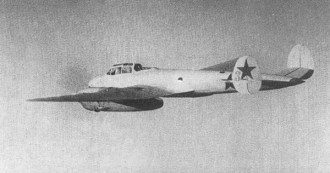

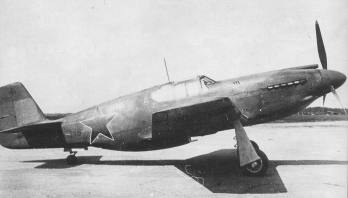


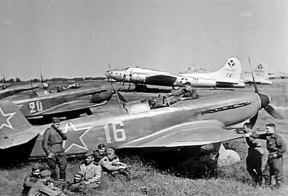
 After graduation, Glinka was assigned to the Transcaucasian Military District’s Air Force Fighter Wing near the city of Baku in the Azerbaijani Soviet Socialist Republic. In the summer of 1941, in the wake of Germany’s invasion of the Soviet Union, Glinka was assigned to the 45th IAP, which was stationed in Iran during the Anglo-Soviet invasion of the country in August and September. Equipped with a Polikarpov I-16, Glinka did not fly any combat missions during the invasion, but did manage to fly several hundred sorties in the “Rata” before the 45th IAP was transferred to the Crimean Front in early 1942.
After graduation, Glinka was assigned to the Transcaucasian Military District’s Air Force Fighter Wing near the city of Baku in the Azerbaijani Soviet Socialist Republic. In the summer of 1941, in the wake of Germany’s invasion of the Soviet Union, Glinka was assigned to the 45th IAP, which was stationed in Iran during the Anglo-Soviet invasion of the country in August and September. Equipped with a Polikarpov I-16, Glinka did not fly any combat missions during the invasion, but did manage to fly several hundred sorties in the “Rata” before the 45th IAP was transferred to the Crimean Front in early 1942.
 The 100th GIAP then received a much deserved 6-month rest in late 1943 and early 1944. In the spring of 1944, the regiment was sent to provide air cover the Second and Third Ukrainian Fronts for the Jassy–Kishinev Offensives. In the first week of May, Glinka had yet another brush with death when a Li-2 transport aircraft on which he was traveling crashed into a mountain. Sustaining serious injuries in the crash, Glinka lay in the wreckage for two days before being rescued. In July, after spending two months in the hospital, Glinka rejoined his regiment, which had been sent to provide air cover for the Lvov–Sandomierz Offensive. During the operation, the Soviet ace shot down nine German planes, raising his score to 46. Glinka was inactive until the Battle of Berlin the following spring, where he shot down two Bf-109s and two Fw-190s.
The 100th GIAP then received a much deserved 6-month rest in late 1943 and early 1944. In the spring of 1944, the regiment was sent to provide air cover the Second and Third Ukrainian Fronts for the Jassy–Kishinev Offensives. In the first week of May, Glinka had yet another brush with death when a Li-2 transport aircraft on which he was traveling crashed into a mountain. Sustaining serious injuries in the crash, Glinka lay in the wreckage for two days before being rescued. In July, after spending two months in the hospital, Glinka rejoined his regiment, which had been sent to provide air cover for the Lvov–Sandomierz Offensive. During the operation, the Soviet ace shot down nine German planes, raising his score to 46. Glinka was inactive until the Battle of Berlin the following spring, where he shot down two Bf-109s and two Fw-190s.